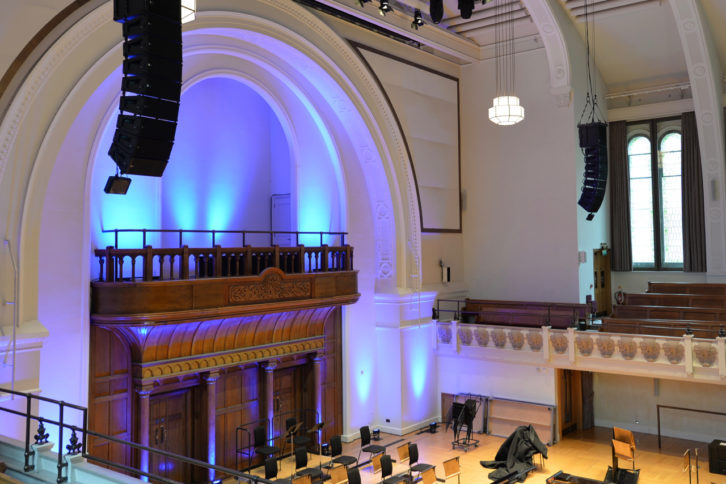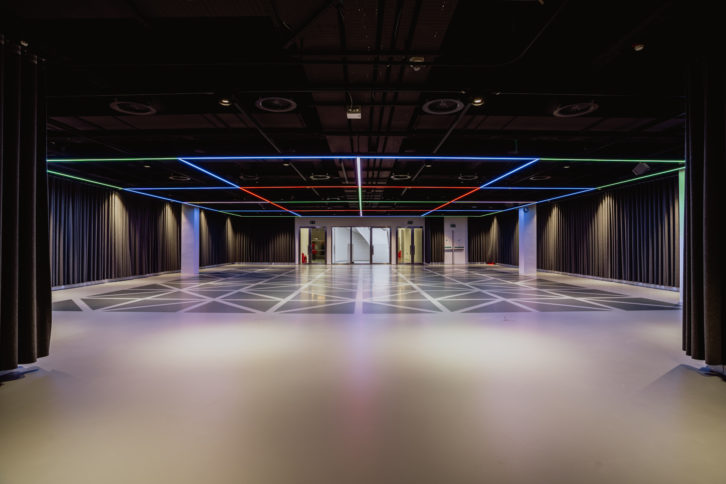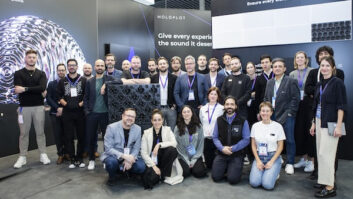
Having firstly considered how integrators negotiate the delicate balance between a customer’s hopes for a new installation and what can actually be achieved with their stated budget. Here David Davies discovers the importance of conversations about choice of solution happening at an early stage, and also looks at the post-installation life of a project.
Whatever the scale of the installation or its financial parameters, the clue to a successful project is invariably defining its primary objectives at the earliest possible stage. This also helps to identify compromises that may be made without hindering the overall outcome.
“A key question to ask is ‘what do people want to achieve?’” says Jason Larcombe, senior project manager at White Light. “There is no point putting in a system, however cheap it might be, if it does not achieve what the client requires. Once the objectives have been defined then it may come back to the kind of conversation that says ‘okay, you have this level of budget so we might not be able to include certain elements’.”
It could be an option to miss out certain elements but spend more on those that are included in the knowledge “that they will be robust and will [still be going strong] in 10 years’ time. Alternatively, they might wish to look at alternative [cheaper] products that meet the brief but which might have to be replaced or upgraded after a few years.”
Whatever the ultimate decision about specification, those conversations “should always happen at an early stage so everyone involved in a project is clear on what direction the company wants to go in.”
For Roger Kirby, director of Adlib, it can be preferable to encourage a scaling-down of intended works as opposed to selecting cheaper products. “Given the rigorous use of most installed solutions, the products need to be tough, of reliable specification, well-presented and installed,” he says. “Should budgets be limited or reduced, the most sensible reduction is to look at the overall scope of works combined with staged funding to deliver the final package, rather than the alternative of installing equipment with questionable reliability which may end up costing more in the long-term.”
When considering reductions, adds Kirby, one productive route entails “breaking down any complete scheme into smaller relevant bundles. Once this is done it is then much easier for the end-user to prioritise their wish lists.”
“Should budgets be limited or reduced, the most sensible reduction is to look at the overall scope of works”
Brand choices
Historically, installers have sometimes been able to benefit from leeway in terms of the pricing of products acquired from distributors or manufacturers – particularly those with whom they have established long relationships and/or bought from in quantity. Ultimately, it hinges on the mindset of the companies involved – and that remains the case today.
“Many manufacturers and suppliers will not deviate from their book prices, while others may offer additional discounts for serious quantities only, and I can respect both decisions,” says Kirby. That said, “fashion trends on technical riders can change quickly. Last year’s equipment models are often available at a lower cost and work perfectly well, and this can help to offer impact given limited budgets.”
In light of variable customer budgets, it follows that most integrators now favour a broad cross-section of brands and solutions, opting to use those most applicable to each new project.
White Light, says Larcombe, is always keen to use brands that “you know will be very robust, and which offer a variety of products within a range – from low-entry level to high-end pro-user. They should also be well-recognised brands that will be able to offer support and back-up over the long-term. You should be confident that they will still be there in 5 to 10 years’ time.”

Support and maintenance
With initial conversations having hopefully yielded a project plan that offers a good balance between price, form and functionality, it may be that the customer also wishes to discuss what happens after the work is complete. After-care can take a variety of forms – from telephone support when it is needed to regular scheduled maintenance and upgrades – but there is a general consensus that the post-installation life of a project is becoming more important to its overall profitability.
For Autograph, post-installation work tends to involve “regular preventative maintenance and training, all tailored to what the system is and what maintenance is required. For example, the maintenance needed for installed radio mics and PA is going to be pretty different in a venue running a rock and roll system to one with an installed, network-type system,” says Chris Austin, who is technical sales manager at Autograph Sales & Installations.
Larcombe says that White Light perceives after-care “as essential, and as such it tends to be sold at the very beginning of the project. A lot of what is involved is pre-emptive maintenance, such as making sure the system is kept clean and receives a regular service. An obvious example would be making sure that a cooling system is maintained to avoid blockages that might lead to it needing to be replaced.”
Kirby observes that “although the two can go hand-in-hand with support packages frequently offered at point of sale, long-established venues and operators may have relationships for maintenance and service [already in place]. We don’t want to step on anyone’s toes but are happy to quote or include this when asked. I do see this increasing in the future, but I would say that’s more to do with the nature of the equipment than anything else.”
Although integrator specialisms and priority areas obviously vary, you would be hard-pushed to find a company that does not employ formal mechanisms to monitor the profitability of its projects.
“We have an internal tool for this,” says Graham Fry, managing director of SCC AVS, adding that SCC AVS teams are constantly mindful of what “was planned to happen vs what actually happened”.
For Kirby, “it’s imperative that we keep track of the project costings, so we have developed systems internally for this. On the larger construction-type projects you can quickly get caught out when it comes to cashflow and profitability if you’re not monitoring them regularly.”
Even smarter thinking
In closing, it seems reasonable to predict that the ability integrators generally exhibit in terms of balancing cost and functionality may have to become even more acute as expectations of AV evolve. In particular, as Larcombe observes, the rise of VR, AR and interactivity in general is giving rise to a whole new tier of requirements that will have to be factored into new projects across the board.
“There are all these new technologies that are becoming part of our daily lives that we now expect to see in commercial projects and when we interact socially,” he says.
Hence, it’s probable that integrators will need to think even more carefully about their solutions and support packages – and about the overall balance of investment – as we journey towards a world in which the virtual is ever more tightly integrated into the physical.
www.adlib.co.uk
www.autographsales.co.uk
www.avsnet.co.uk
www.whitelightltd.uk







